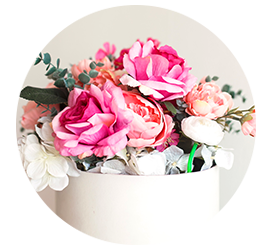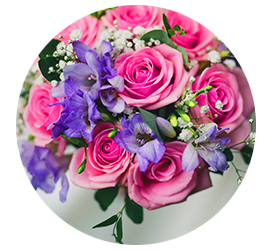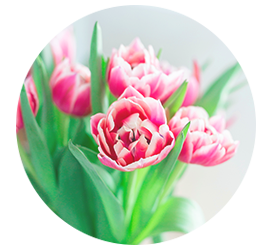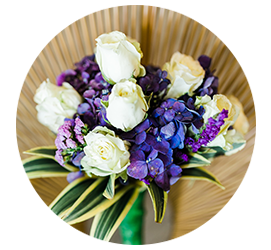Discover How Flowers Uplift Your Spirit and Enhance Well-Being
Posted on 22/05/2025
Discover How Flowers Uplift Your Spirit and Enhance Well-Being
Flowers have long enchanted humans with their beauty, aroma, and diversity. Beyond their visual appeal, flowers play a transformative role in enhancing well-being and uplifting our spirits. In this comprehensive guide, we'll delve into the ways flowers benefit your emotional and mental health and provide evidence-based insights and uplifting inspiration to surround yourself with blooms for a happier, healthier life.
The Connection Between Flowers and Emotion
Have you ever noticed a smile brighten your face when you receive a bouquet? Or felt a peaceful calmness when strolling through a garden? There's science behind these feelings--the presence of flowers can significantly uplift your spirit and increase your sense of well-being. Flowers aren't just ornamental; they're powerful tools in nurturing our emotional health.
The Science Behind Flowers and Well-Being
- Instant Mood Booster: Studies published in journals like Evolutionary Psychology show flowers trigger happy emotions, heighten feelings of satisfaction, and affect social behavior in a positive manner.
- Stress Reduction: The colors and scents of flowers can lower levels of anxiety and stress. Research from Harvard Medical School indicates flowers at home promote feelings of compassion and decrease worry and negativity.
- Enhanced Cognitive Function: Some studies suggest flowers in a workplace can increase productivity, learning, and creative performance.
- Reviving Energy: Floral fragrances can stimulate senses and elevate energy levels, contributing to overall vitality.
Flowers not only beautify spaces but directly influence your well-being. Their vivid colors, gentle shapes, and pleasant aromas serve as natural therapies, reconnecting us to a calmer and more joyful self.

Why Flowers Uplift the Spirit
Color Psychology and Positive Emotions
Colors are known to impact mood dramatically. Flowers manifest every hue imaginable, each evoking a unique emotional response:
- Yellow flowers (e.g., sunflowers, daffodils): Associated with happiness, optimism, and energy, yellow blooms can brighten even the gloomiest day.
- Blue flowers (e.g., hydrangeas, irises): Elicit feelings of tranquility and calm, helping reduce stress and anxiety.
- Red flowers (e.g., roses, tulips): Symbolize passion, love, and courage, often reviving enthusiasm.
- Purple flowers (e.g., lavender, lilac): Connect with creativity and inspiration, sparking imaginative energy.
- White flowers (e.g., lilies, gardenias): Represent purity, peace, and serenity, fostering reflective states.
Surrounding yourself with different colored flowers can target specific emotional needs--from energizing mornings with bright yellows to encouraging relaxation at day's end with soft whites and blues.
Scent and Sensory Influence
The scent of flowers offers a form of aromatherapy, impacting your mood on physiological and psychological levels. For instance:
- Lavender: Renowned for its relaxing and anti-anxiety properties.
- Jasmine: Shown to uplift mood and combat depression.
- Rose: Associated with comfort, stress relief, and a sense of love.
Breathing in the natural essence of flowers can create moments of mindfulness and rejuvenation, even if only for a fleeting second throughout your day.
The Psychological Benefits of Flowers
Encouraging Positive Social Interactions
Gifting and receiving flowers strengthens social bonds. Flower arrangements are universal symbols of kindness and affection, creating a ripple effect of positivity in relationships. This act cultivates gratitude, fostering an uplifted spirit not just for the receiver, but also the giver.
Remedies for Seasonal Affective Disorder
Winter's grey can dampen moods. Bringing fresh blooms indoors is a powerful, natural antidote to Seasonal Affective Disorder (SAD). Their vibrancy mimics a burst of spring, offering solace and hope during colder months.
Boosting Creativity and Focus
The presence of flowers in workspace environments can revitalize mental clarity and creative problem-solving. Visual stimulation from floral arrangements helps break monotony, while their scents may improve concentration.
Flowers and Well-Being Through the Ages
Flowers in Cultural Rituals
Throughout history, cultures worldwide have celebrated flowers for their connection to well-being:
- Japanese Hanami: The tradition of viewing cherry blossoms for renewal and reflection.
- Indian Festivals: Marigolds and jasmine garlands symbolize blessing, positivity, and celebration.
- Victorian Language of Flowers: Blooms like violets and roses conveyed emotions and intentions, forging emotional intimacy.
These rituals highlight the universal human instinct to seek comfort, joy, and connection through flowers.
Modern Therapeutic Uses
Modern holistic therapies increasingly use flowers in healing:
- Flower Arranging as Mindfulness: The Japanese art of Ikebana or simple home arranging can be meditative and grounding.
- Horticultural Therapy: Gardening with flowers is a recognized approach in psychological rehabilitation, offering physical, emotional, and cognitive benefits.
- Aromatherapy: Essential oils from flowers are common in wellness routines to enhance mood and relaxation.
Enhancing Your Daily Life with Flowers
Practical Ways To Harness the Power of Flowers
You don't need an elaborate garden to enjoy the well-being benefits of flowers. Try these simple approaches:
- Keep a Vase Nearby: Place fresh flowers in your kitchen, bedroom, or workspace. Even a single stem of your favorite bloom can make a difference.
- Create a Mindfulness Practice: Take a few minutes to observe a flower's delicate details--its color gradations, shapes, textures, and scent. Practice deep breathing to savor the moment.
- Give Flowers Generously: Surprise a friend or neighbor with a small bouquet. The act of gifting flowers uplifts both the receiver and yourself.
- Try Edible Flowers: Add color and nutrition to salads, desserts, and drinks with edible varieties like nasturtium, pansy, or calendula.
- Engage in Flower-Based Crafts: Pressed flowers, floral wreaths, or homemade potpourri can be both relaxing and rewarding.
Turning to flowers as your daily wellness allies can transform ordinary routines into uplifting rituals.
The Power of Indoor Flower Gardens
You can create a mini-oasis with a few potted plants or window boxes. Research suggests indoor plants, particularly flowering ones, increase feelings of happiness and reduce psychological distress. If space is limited, even a small pot of violets or African daisies can have a big impact.
Real-Life Stories: How Flowers Uplifted Lives
*Maria*, a busy executive, felt the pressures of her demanding job. After reading about the emotional benefits of flowers, she began keeping a vase of fresh tulips on her desk. "Now, every time I look at them, I smile," she says, "and my stress just melts away."
*Ben and Sarah* transformed their small balcony into a container flower garden. They discovered not only a calming retreat from city life, but also a shared passion that brought them closer together. "Our relationship feels more harmonious and joyful just from tending to our flowers each day," shares Sarah.
*Lila*, recovering from grief, found solace in the meditative practice of arranging wildflowers. "It gave me purpose and brought beauty back into my home when things felt dark," she explains.
*These personal stories remind us* that flowers can change lives in big and small ways, reinforcing just how powerfully nature influences our well-being.
The Role of Flowers in Mindfulness and Self-Care
Self-care involves nourishing our minds and spirits as much as our bodies. Engaging with flowers--whether by arranging, smelling, or simply observing--can deepen mindfulness and promote tranquility.
- Mindful Observation: Taking a moment to notice a flower's beauty helps anchor us in the present, reducing rumination and worry.
- Journaling: Write about your interactions with flowers and how they affect your mood. This reinforces their positive impact and fosters ongoing gratitude.
- Creative Expression: Sketch, paint, or photograph flowers to inspire creativity and evoke emotional release.
By integrating flowers into your self-care practice, you open yourself to increased joy, inspiration, and a deepened sense of well-being.

Flowers as Symbols of Resilience and Renewal
Flowers teach us about growth, impermanence, and new beginnings. Their natural cycles--blossoming, fading, returning again--mirror our own emotional journeys. Inviting flowers into your daily life is a gentle reminder to embrace hope and resilience.
- Spring Blooms: Symbolize new opportunities and fresh starts.
- Perennial Flowers: Remind us that beauty and happiness can return even after difficult times.
Let flowers be your silent motivators, encouraging you to persevere and grow through whatever life brings.
Conclusion: Experience Lasting Well-Being by Embracing Flowers
In a fast-paced, sometimes stressful world, discovering how flowers uplift your spirit and enhance well-being is a gift you can give yourself and others. Through their colors, scents, and symbolism, flowers offer natural joy, comfort, and renewal. Whether it's filling your home with vibrant bouquets, tending a garden, or simply pausing to appreciate a wild bloom, make flowers a joyful habit in your life. The uplifting, restorative power of blooms is always within reach--inviting you to blossom from within.
For more tips on boosting well-being with flowers and to cultivate ongoing happiness, follow our blog for weekly inspirations!
Latest Posts
Discover the 5 Most Cherished Flowers for Valentine's Day Gifting
Surprise Them with Birthday Flower Arrangements
Exploring the Red Rose Valentine's Day Tradition
Keep Your Poinsettias Thriving Longer
Explore the vibrant color meanings and symbolism of peony flowers






